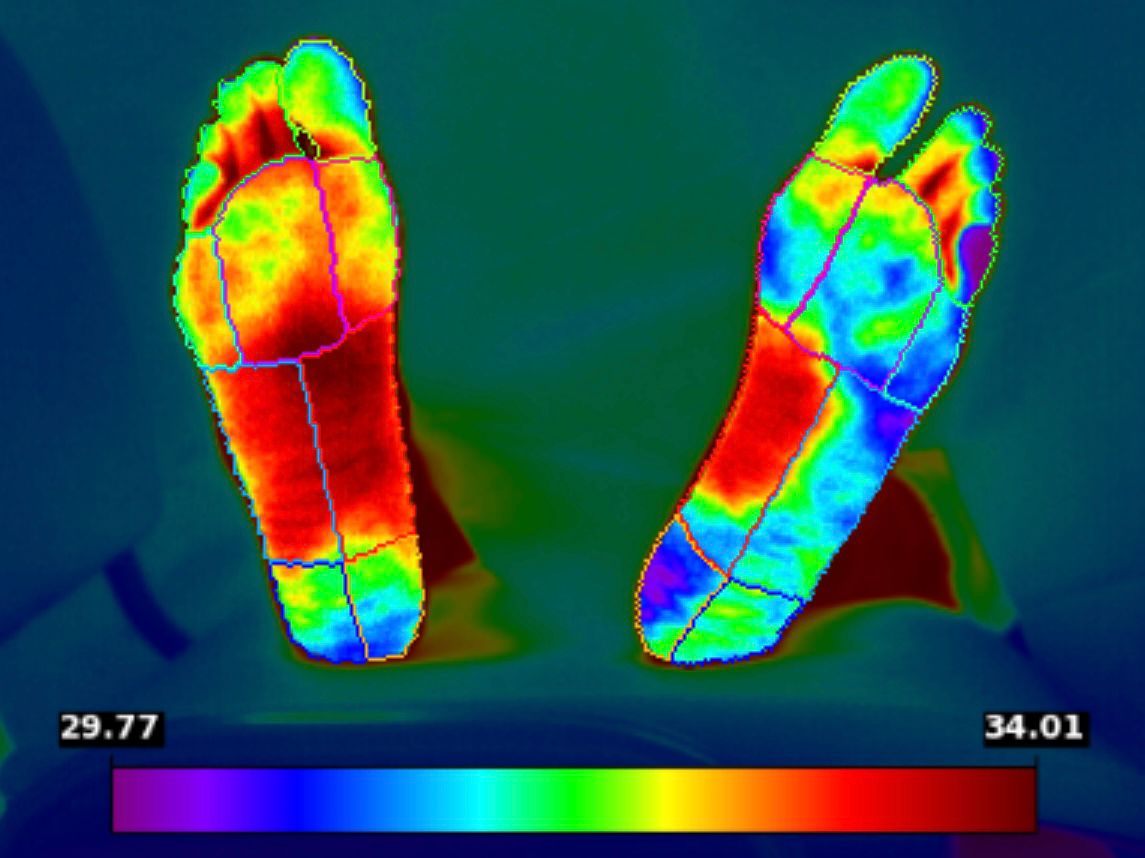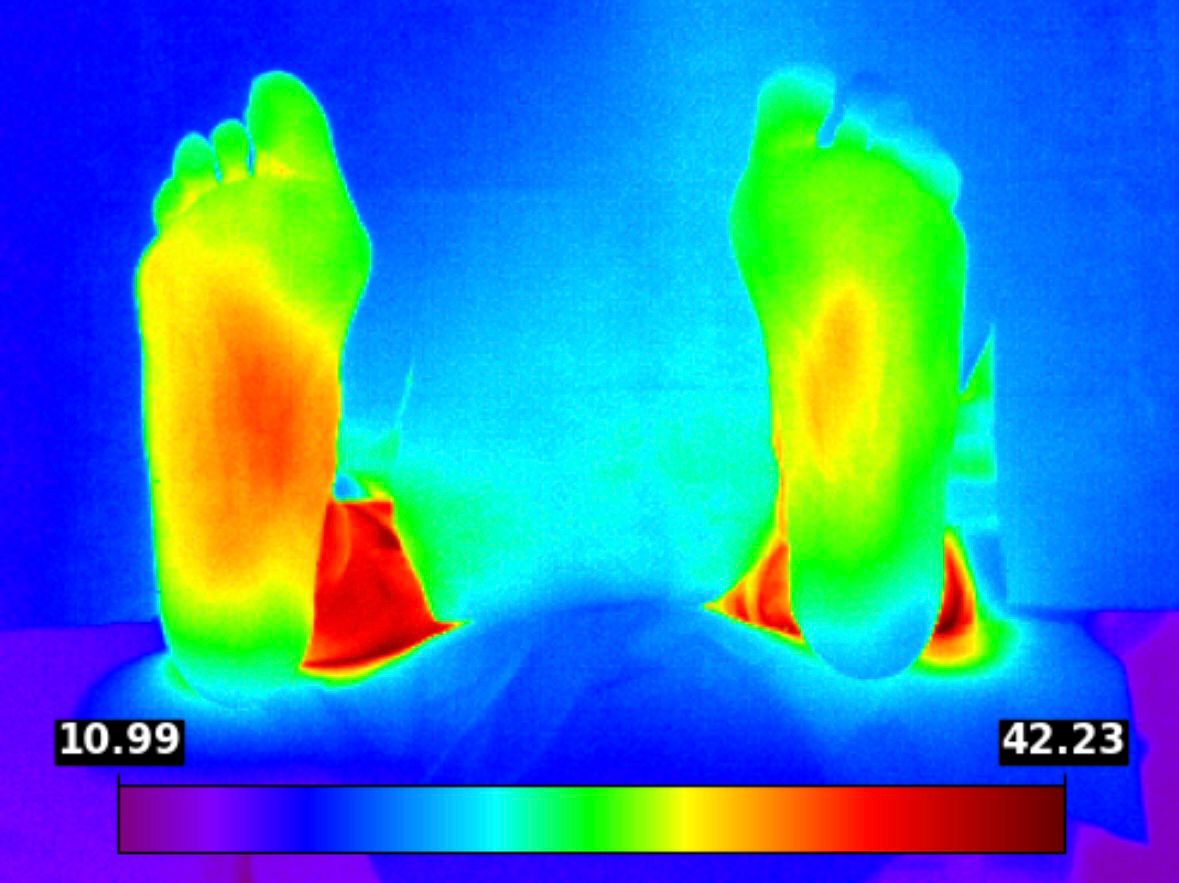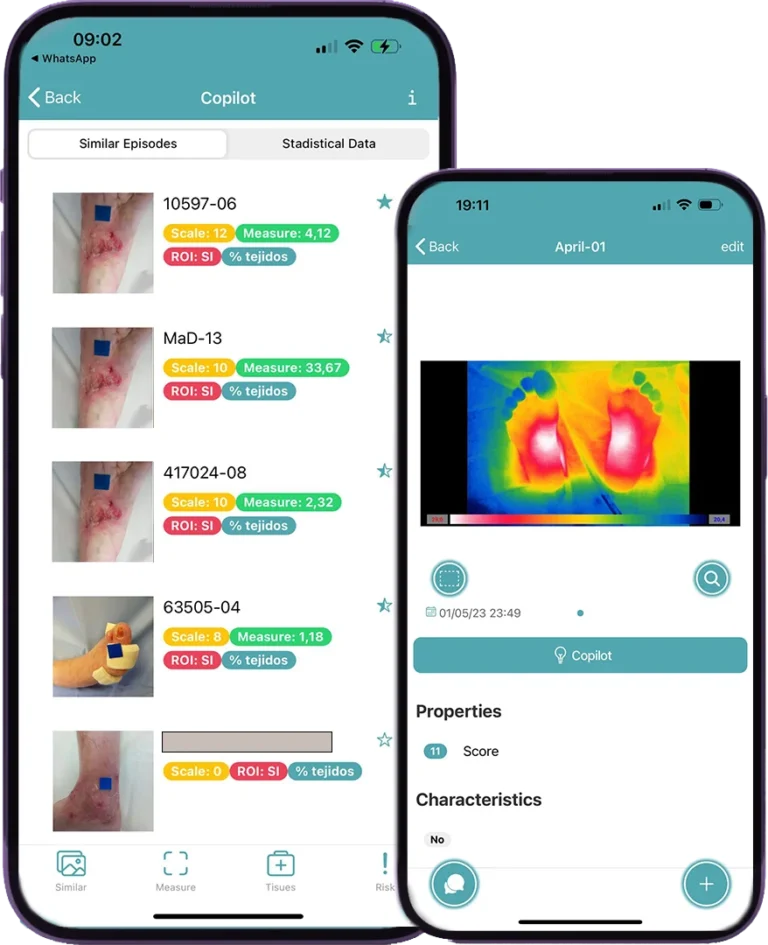
Diabetic foot is one of the most serious and common complications of diabetes. Ulcers, infections, and potential amputations not only impact the patient’s quality of life but also represent a significant burden for healthcare systems. The key to preventing these outcomes lies in one crucial concept: early detection.
Enabled by Clinicgram’s Spectral Intelligence (fusion of visible/thermal imaging with clinical context), it is now possible to support early identification of risk prior to wound onset. Thanks to technological advancements and digital health platforms like Clinicgram, it is now possible to identify signs of risk before a wound even appears. This ability to predict and act transforms the clinical approach from reactive to proactive, helping healthcare.
What is early detection in diabetic foot?
Early detection refers to the proactive identification of physiological, thermal, or structural signs that indicate a potential risk of developing a wound. It’s not just about spotting a forming ulcer—it’s about recognizing the subtle warning signs that a problem may arise if left unaddressed.
This detection is based on:
- Local temperature increases in specific areas of the foot.
- Thermal asymmetries between both feet.
- Areas with excessive or sustained pressure.
- Signs of poor blood flow or ischemia.
- The patient’s clinical history, including previous wounds.
Thanks to thermal imaging, automated image analysis, and the use of artificial intelligence, platforms like Clinicgram provide healthcare professionals with enhanced tools to monitor and predict risk with greater accuracy.
Risks of late or missed detection
Failing to detect early warning signs in diabetic foot can result in serious medical and emotional consequences. When early detection is not embedded in clinical protocols, it becomes a missed opportunity to intervene before damage escalates—directly impacting patient safety, quality of life, and healthcare resource management.
The main risks include:
- Rapid progression from pressure points or calluses to deep, infected ulcers.
- Severe infections that may require intravenous antibiotics or surgical debridement.
- Increased hospital admissions, longer stays, and higher healthcare costs.
- Amputations, either partial or total, which have long-term physical and psychological consequences.
- Emotional distress, including depression, anxiety, and loss of autonomy.
- Inequity in care due to disparities in access to digital diagnostic tools or structured monitoring.
Importantly, diabetic foot complications often develop silently. By the time symptoms like pain or redness appear, the tissue damage may already be advanced. This silent evolution underscores why early detection and intervention—supported by technologies like Clinicgram—are critical for truly effective prevention
Benefits of early intervention
Implementing a proactive assessment strategy delivers multiple benefits—for patients, healthcare professionals, and healthcare systems alike.
1. Fewer clinical complications
Preventing ulcer formation and avoiding infections is possible when signs of risk are detected in time. With tools like Clinicgram, clinicians can take immediate action—such as adjusting footwear or applying localized treatment—before the wound appears.
2. Improved patient quality of life
Preventing wounds helps preserve mobility, autonomy, and emotional well-being. Patients feel more confident and less anxious about future complications when proactive monitoring is in place.
3. Lower healthcare costs
Early intervention leads to less need for complex treatments, fewer antibiotics, and reduced hospital admissions. This generates significant savings for both public health systems and private clinics.
4. Increased efficiency for healthcare professionals
Platforms like Clinicgram allow clinical teams to prioritize based on real-time risk, optimize appointments, and document cases quickly. This reduces workload and improves clinical decision-making.
5. Data-driven decision-making
Digital assessments provide structured and detailed clinical records, supporting long-term follow-up, teamwork, and clinical audits. Artificial intelligence helps identify subtle patterns of risk that could otherwise go unnoticed.
Clinicgram: Your ally in early detection
Clinicgram is a cutting-edge digital health platform tailored to support healthcare professionals in managing complex wounds and preventing complications—particularly in high-risk cases such as diabetic foot. It provides a seamless, data-driven environment for daily wound monitoring and early detection of physiological anomalies that precede visible skin breakdown.
By combining clinical image registration, thermal imaging (thermography), and AI-powered risk analysis, Clinicgram empowers care teams to transition from reactive care to a truly preventive and personalized approach.
Here’s how Clinicgram supports healthcare providers in early detection:
- Thermal Risk Zone Identification: Through non-contact thermal scans, clinicians can identify subtle temperature asymmetries that may indicate inflammation, ischemia, or impending ulceration—days before visual signs appear.
- Detect Risk of Diabetic Foot Ulcer: Assesses diabetic-foot-ulcer risk by comparing thermal signatures across predefined regions of interest and between contralateral feet. Feature metrics are evaluated against a model trained on expert-annotated datasets.
- Personalized and Actionable Care Plans: Based on the thermal and visual data collected, clinicians can create tailored treatment plans, aligning interventions with patient-specific risk patterns and medical history.
- Longitudinal Risk Visualization: Clinicgram enables healthcare teams to track risk evolution over time with structured data, annotated imagery, and progress indicators. This enhances documentation quality, team collaboration, and decision-making.
- Protocol Integration and Workflow Compatibility: The platform can be embedded into daily rounds or home visits, and integrates with existing wound prevention protocols—such as those for pressure ulcers, post-surgical sites, or diabetic foot follow-up.
By adopting Clinicgram, healthcare professionals gain a reliable, evidence-based tool that strengthens their ability to detect early warning signs, improve patient outcomes, and optimize resource allocation. It’s not just a platform—it’s a proactive partner in delivering smarter, safer, and more efficient wound care.


Conclusion
Early detection in diabetic foot care doesn’t just save limbs—it protects lives, optimizes clinical time, and reduces costs. Digital platforms like Clinicgram turn prevention into a proactive, evidence-based, and efficient solution.
Take action before it’s too late. Start using Clinicgram to detect diabetic foot risks early and protect your patients from serious complications.tion and discover how Clinicgram can enhance your diabetic foot care strategy.
Please rate this post


